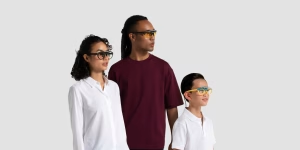Background: Adult gaze plays an important role in early infant development, and infants are highly sensitive to its presence and direction. Little is known, however, about how adults look at infants while interacting with them. Using eye-tracking technology, this study investigated maternal gaze during naturalistic interactions, and how it was influenced by infant age, focusing on the transition from the first to the second month when social expressiveness emerges, and by infant facial configuration, focusing on the effect of cleft lip.
Methods: Thirty infants (10 with a cleft lip), and their mothers, were seen at 1, 3, 5, 7, and 9 weeks. Mothers were asked to interact with their infants while wearing eye-tracking glasses. Fixation duration and count were calculated for general (infant face, body, and surrounding environment), and infant facial (eyes, mouth, other) areas.
Results: At all ages, mothers gazed almost exclusively towards their infant’s face, but this was reduced in the presence of a cleft lip. Within the infant’s face, the eyes attracted the greatest attention, for all mothers, at all ages. From the first to the second month, all mothers increased their visual attention towards their infant’s mouth. Regardless of infant age, the presence of a cleft lip was associated with decreased maternal gaze to the infant’s mouth.
Conclusions: This study provides novel findings concerning maternal gaze to infant faces during naturalistic interactions. Maternal gaze changes with infant age, in line with established shifts in social development, and according to infant facial configuration. Decreased gaze to the mouth area associated with infant cleft lip might affect maternal responsiveness, and suggests new dimensions to target in supporting these mothers.
Keywords: Cleft lip/palate; Face perception; Gaze; Infancy; Mother-infant interaction.







